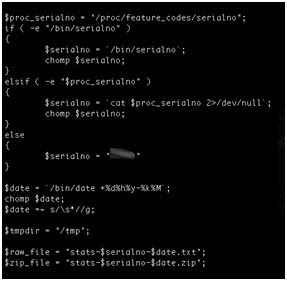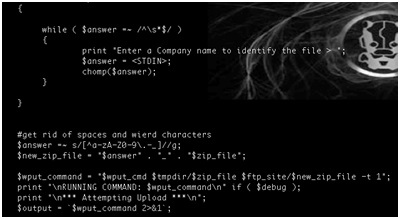There was a time when I imagined I was James Bond zip lining into a compromised environment, equipped with all kinds of top-secret tools. I would wave my hands over the boxes needing investigation, use my forensics glasses to extract all malware samples, and beam them over to Miss Moneypenny (or “Q” for APT concerns) for analysis. I would produce the report from my top-notch armpit laser printer in minutes. I was a hero.
As wonderful as it sounds, this doesn’t ever happen in real life. Instead of sporting a classy tuxedo, we are usually knee deep in data… often without boots! I have recently given a few presentations(1) on Incident Response (IR). The question I am most often asked concerns the tool chain that would enable an individual or a team to perform the basic actions one would expect from an Incident Responder.
Let me be clear. There is an immense difference between walking on to a crime scene in which your organization’s intent is to bring a perpetrator to court and approximately 90% of the actual IR work you will perform. The biggest difference has to do with how you collect and handle evidence, and you can rest assured that any improperly handled evidence will be relentlessly attacked by the defense.
However, I am writing this blog post from the point of view of a blue team member. I’ll focus on the tools that are available to determine what has happened, when it happened, and (most importantly) how to make sure it does not happen again.
TL;DR : Many, if not all, of the tools you will need are available in the SANS Investigate Forensics Toolkit (SIFT) VMWare image(2) . You can skip the rest of this post and start playing with these tools right away if you want to, but I hope I can at least give you some pointers on where to look first.
As I illustrated in the introduction, IR work is incredibly unsexy. Almost without exception, you will run into a special case that requires you to work on the command line for hours trying to figure out what has occurred. The next-next finish of many a security product installation and use process is something you will nostalgically reflect on over a burning log (pun intended).
You will typically have in your possession three important pieces of evidence:
- Log files
- Memory images
- Disk images
I will address these in three separate blog posts and try to give you some ideas about the tools you can use during your investigation.
In this blog post, we will start off by looking at log files.
Every device on the network creates a gigantic amount of data. Some of it is used for monitoring purposes, but most of it is (hopefully) stored and never to be looked at again. Until a system is compromised, this data is generally useless with the exception of a few hidden golden threads. These threads will give you a good starting point for figuring out what has happened. They might also be useful in tying the whole story together. Essentially, you must figure out what the log files want to tell you. (Cue the X-Files soundtrack.)
Sifting through log files is like looking for gold. Your initial sift will be very coarse grained. As you get rid of more and more of the dirt, the mesh of your sift will get finer and finer.
In my humble opinion, there is nothing better than having a thorough understanding of the Unix command-line tools ‘grep’, ‘sed’, and ‘awk’. The good thing about these tools is that you will find them on almost any Unix or Linux box you can get your hands on. The bad thing is that you will either need to know or need to find out what you are looking for.
In the absence of a full-fledged SIEM infrastructure, two tools exist that I recommend you become familiar with:
First up, OSSEC. Not only is this a good (and open-source) host-based intrusion detection system, but it also allows you to feed it collected logs through its command-line tools! The events will trigger OSSEC out-of-the-box alerts and give you a good overview of the most interesting events that have taken place. You can also easily develop custom rule sets based on (as an example) publicly available data from other compromises(4)
As you become more experienced with OSSEC, you can build your own set of scripts, drawing inspiration from a variety of places. In cases where ye olde *nix is not available, make sure you are also familiar with a Windows shell tool. (Powershell is one heck of an alternative!) Also, keep your Command Line Kung Fu(5) handy!
You will not be able to perform IR without the powerful yet extremely elegant log2timeline(6) tool. This blog post does not offer enough space to provide a decent overview of log2timeline. In essence, it groks data from different sources and creates a ‘Super Timeline’ that helps you to narrow in on those timeframes that are relevant to your investigation. It is one thing to dig through information on a command line, but it is a completely different ball game when you can visualize events as they have occurred.
In upcoming blog posts, I will dig into the juicy secrets that can be found in memory and disk images. A major lesson to be learned as you climb on the ladder of IR is that many of the tools you will use are produced by your peers. Sure, IR software is available and works well. However, the bulk of tools available to you have been developed by your fellow incident responders to address a particular problem. Many responders generously release their tools to the public domain for others to use. We learn from others probably more than we teach.
(1) BYO-IR: Build Your Own Incident Response: http://www.slideshare.net/wremes/isc2-byo-ir
(2) http://computer-forensics.sans.org/community/downloads
(3) http://www.ossec.net
(4) e.g. APT1 Indicators of Compromise @ http://intelreport.mandiant.com/
(5) http://blog.commandlinekungfu.com/
(6) http://log2timeline.net/











